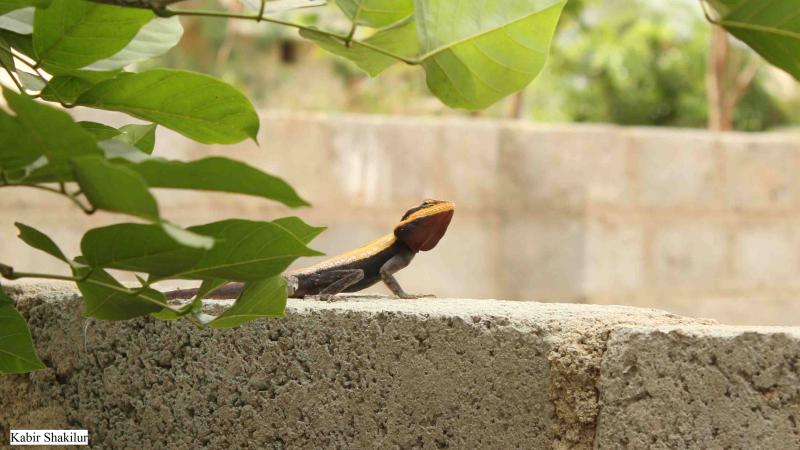
Bengaluru, once called the ‘garden city’, has today traded its greenery for the grey tones of cement. The mushrooming buildings have not only changed the city for its human inhabitants but also for animals that once called this land home. Like us, these animals try to adapt to a new and ever-changing world by learning the tricks and trades necessary to thrive. Now, a study by researchers from the Indian Institute of Science (IISc), Bengaluru, has discovered that lizards in the city’s suburbs are street smart, and learn faster than their rural brethren, to stay safe.
Lizards use a variety of skills to find food and a safe place to rest and to spot a potential risk. They do this by remembering which landmarks and landscape features are safe or risky. In rural areas, these features remain relatively unchanged, but in a suburban setting, they are highly dynamic. Hence, these lizards need to quickly learn and modify their behaviour based on experience if they want to survive in these new surroundings.
In the current study, published in the journal Biology Letters, the researchers have investigated the learning abilities of the Indian rock agama (Psammophilus dorsalis). They captured a few adult males from rural and suburban parts of Bengaluru and placed them in an enclosure with a perch in the middle and two identical refuge spots. The refuge spots, made from PVC pipes, were placed at the two farthest ends of the enclosure. In a set of two experiments, they evaluated how quickly the lizards learned to recognise the safety of these refuge spots.
In the first experiment, one of these spots was regarded as ‘safe’ and marked with a red square. The researchers aimed to teach the lizards that this refuge was safe by gently tapping on the lizard’s tail with a brush to imitate a predatory attack if it chose any other resting spot. Over time, the lizards learned to opt for the safe refuge immediately.
In the second experiment, the researchers reversed the scenario—the PVC pipe without red square was considered 'safe'. The researchers imitated predatory attacks on the lizard if it chose this pipe. During the trial, they documented how the lizards had to reverse their previously created associations and learn which refuge was now safe.
The study found that suburban lizards outperformed their rural counterparts in both experimental setups as they were able to identify safe from unsafe refuges rapidly. They did so in just seven trials, while rural lizards needed roughly 14 attempts. This observation suggests cognitive flexibility as the lizards had to unlearn old associations and relearn new ones.
Interestingly, the results of this study were at odds with another one on the garden skinks (Lampropholis delicata) that did not find any differences in learning abilities of the urban and rural populations. The researchers of the current study attribute this difference in learning abilities of lizards to the different selection pressures they face in their urban environments.
The rapid changes that suburban P. dorsalis experiences within its lifetime play a substantial role in shaping how quickly it learns about safe refuges. The lizard's increased cognitive ability could be a result of evolutionary differences between the two populations, the individual experiences of a lizard over its lifetime or a combination of both, say the researchers.
The findings of the study throw light on how animals change their behaviours to better adapt to urbanisation. After all, it’s not just humans who must hustle to make it in the big city!





